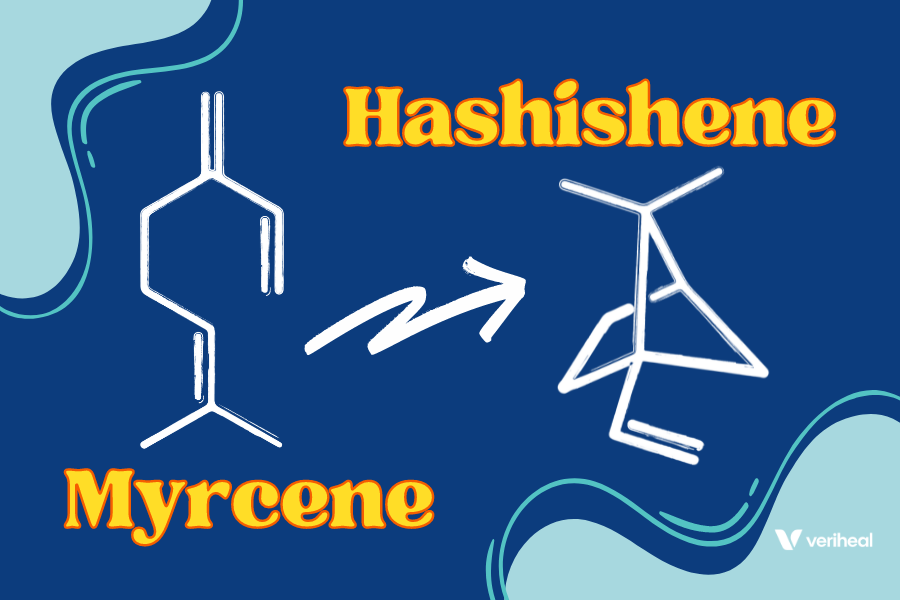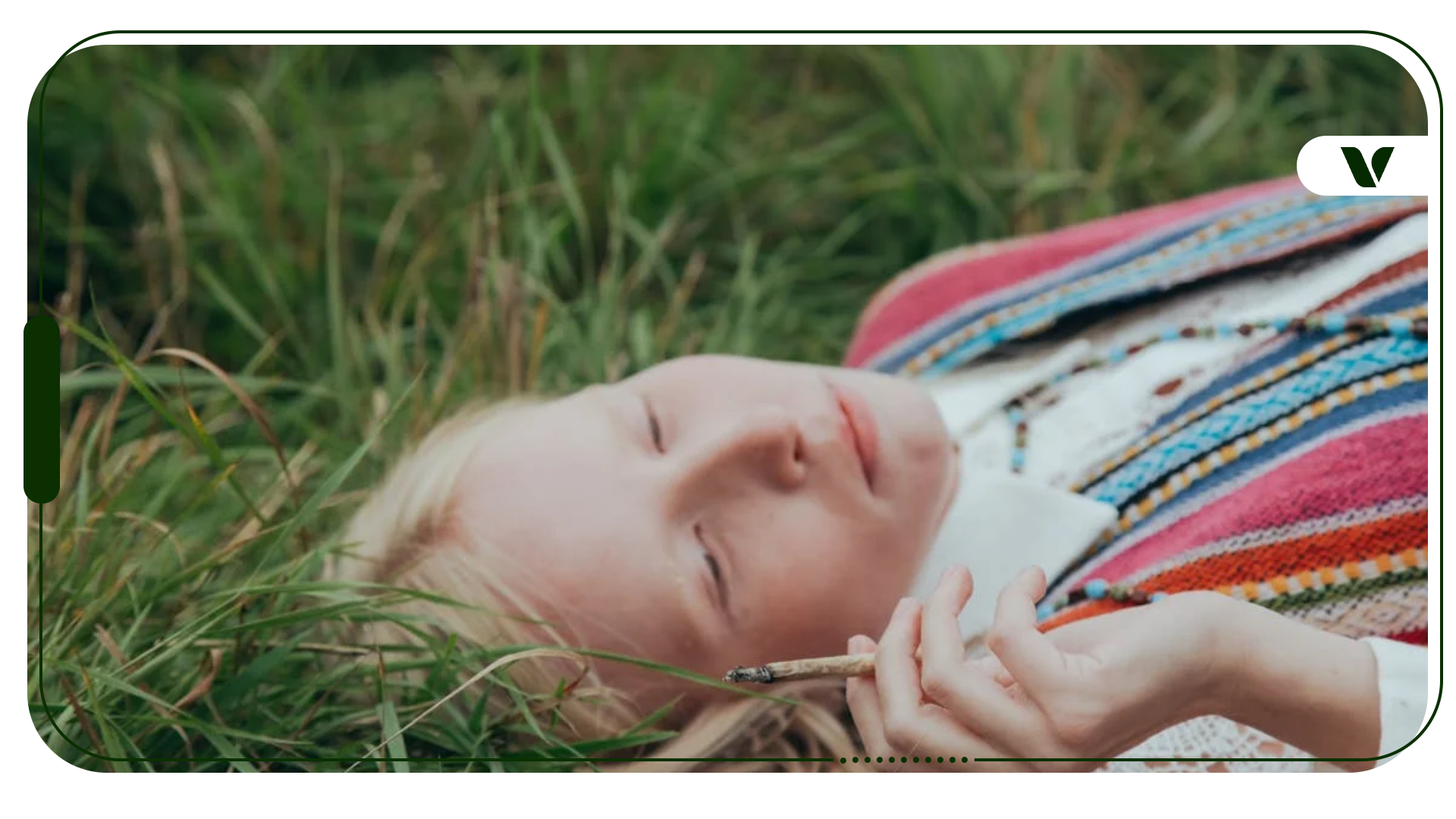Hashishene: Have you heard of it? If you’d like to try it, you’re going to have to get your hands on some authentic Moroccan hash. According to High Times, “Due to the unique traditional methods employed by Moroccan hashmakers, the hashish they produce has been found to be one of the only sources of hashishene in nature.”
Hashishene is a relatively new terpene. Actually, it’s a monoterpene, but we will get into that more in a bit. Not much is known about hashishene; however, before we dive into hashishene, let’s take a look at the history of hash and what makes Moroccan hash so different.
Hashish vs. Hashishene
Before getting into the nitty-gritty of hashishene, it’s important that we first explore hash. Hash is a concentrated form of cannabis that can be smoked or eaten. Hash or hashish contains an average THC level between 30-60%. It’s made by collecting the trichomes from cannabis plants and introducing them to heat and pressure to form what we call hash. The collection of trichomes can be done in a few different ways. One method is to beat dry cannabis branches over a sieve to collect trichomes.
Another is to rub the plants with your hands and scrape the collected resin from the skin. Today, products like dry sift boxes can collect trichomes much in the way beating branches over a sieve would work. Ice water can also be used to strip trichomes, making what is called bubble hash. Once the trichomes are collected, they are introduced to heat, pressure, and a cure to create the final product. A great example of different ways of making hashish would be to watch the late Frenchy Cannoli make temple balls of hash.
A Short History of Hashish
Before hashishene was even a twinkle in Father Cannabis’s eye, hashish ruled the cannabis concentrate gang. Hashish is the original cannabis concentrate. For those of us who have experienced the real deal, we know it’s an exquisite treat. The smoke is flavorful with a pleasing aroma. The effects are tranquil and long-lasting. Hash has been around for thousands of years.
The University of Sydney reports, “The use of cannabis originated in central Asia or western China. Cannabis has been used for its alleged healing properties for millennia. The first documented case of its use dates back to 2800 BC, when it was listed in Emperor Shen Nung’s (regarded as the father of Chinese medicine) pharmacopeia.” In 2900 BC, Chinese Emperor Fu Hsi called cannabis “Ma,” saying it held the properties of both yin and yang. When it comes to hashish, it’s believed that it first surfaced in Arabia around 900 BC.
There are stories of hashish being buried in the desert sand to cure it. The cold nights and hot days must have made for an extraordinary cure. Before hashish was smoked, it was said to have been eaten.
Narcon.org says, “Between 1000 and 1200 AD, the legend of hashish use by assassins in Persia arose. Some scholars claim that the name “hashish” traces back to the word for “assassin.” Whether true or not, by 1300 AD, Marco Polo had heard stories about hashish-using assassins and took these tales back to Europe with him.” Possibly some hashish, too. By the 1800s, hashish had made its way around the globe and was being used by a variety of different people.
Why You Should Get Your Medical Marijuana Card
Veriheal has satisfied millions of patients nationwide by giving them access to these benefits
- Larger purchase limits
- Peace of mind
- Enhanced legal protection
- Access to higher potency strains
- Save up to 25% on cannabis purchases
- Skip the line at the dispensary
Different Types of Dry Sift Hash
Many of the cannabis concentrates today, like shatter, badder, budder, crumble, wax, sauce, diamonds, and more, are a type of hash. These concentrates are made by collecting trichomes using a solvent and introducing them to different temperatures and pressures. If you walk into most dispensaries and ask for hash, budtenders usually point you in the direction of concentrates.
Asking if they carry hashish is the way to find the old-school stuff we love. Don’t be fooled by the pressed buttons of kief. They are not the same thing. Good hashish will be soft and sticky, pulling apart like nougat from a candy bar. Hash is usually reddish or blonde in the center. It should also have a pleasing aroma.
Here are some of the popular types of dry sift hashish:
- Black Afghan
- Red Lebanese
- Blonde Lebanese
- Pakistani
- Turkish Brick
- Moroccan
- Hashishene
What Is Hashishene?
Hashishene is the child of myrcene. It comes to be as a result of a process that is similar to decarboxylation. Exposure to light and oxygen, known as photo-oxidation, causes molecules found in beta-myrcene to become rearranged during the process of making Moroccan hashish. The end result is the transformation of myrcene into hashishene. The two have the same molecules; they’re just arranged differently.
Myrcene is one of the most common terpenes present in cannabis. Many people believe it can also help improve the effects of cannabis and even the longevity of those effects. Myrcene is also found in mangoes, lemongrass, cardamom, hops, and more. Not much is really known about how hashishene affects consumers. Whatever it does, it does it well, as Moroccan Hash is legendary across the cannabis culture and community.
How Moroccan Hash Differs From Other Hash
Moroccan hashish is different than other types of hashish. Real Moroccan hash is something to behold, from what I’ve been told. I’ve heard stories of trips to Morocco where canna-isseurs have ventured into the hills to smoke hashish. Tales of heightened states of mind and hallucinations have been tossed around regarding the use of Moroccan hash.
The hashish there is produced from plants that have been cultivated in the region for thousands of years. Plants are dried on the top of the hash shacks where the hashish is made. The sun is used to cure collected trichomes before they are formed into Moroccan hash. This is a process that can only be done at home here in the U.S. due to testing parameters for cannabis sold on the legal market. Good hash is out there. It’s just hard to find still. I wonder what Morocco is like this time of year?
Unfortunately, to experience hashishene or to even thoroughly research it, it would require authentic Moroccan hash made utilizing traditional methods in order for the conversion from myrcene to hashishene to occur. For now, hashishene is much a mystery in the realm of cannabis, and just one more miraculous aspect pertaining to all this plant offers.
Author, Share & Comments








